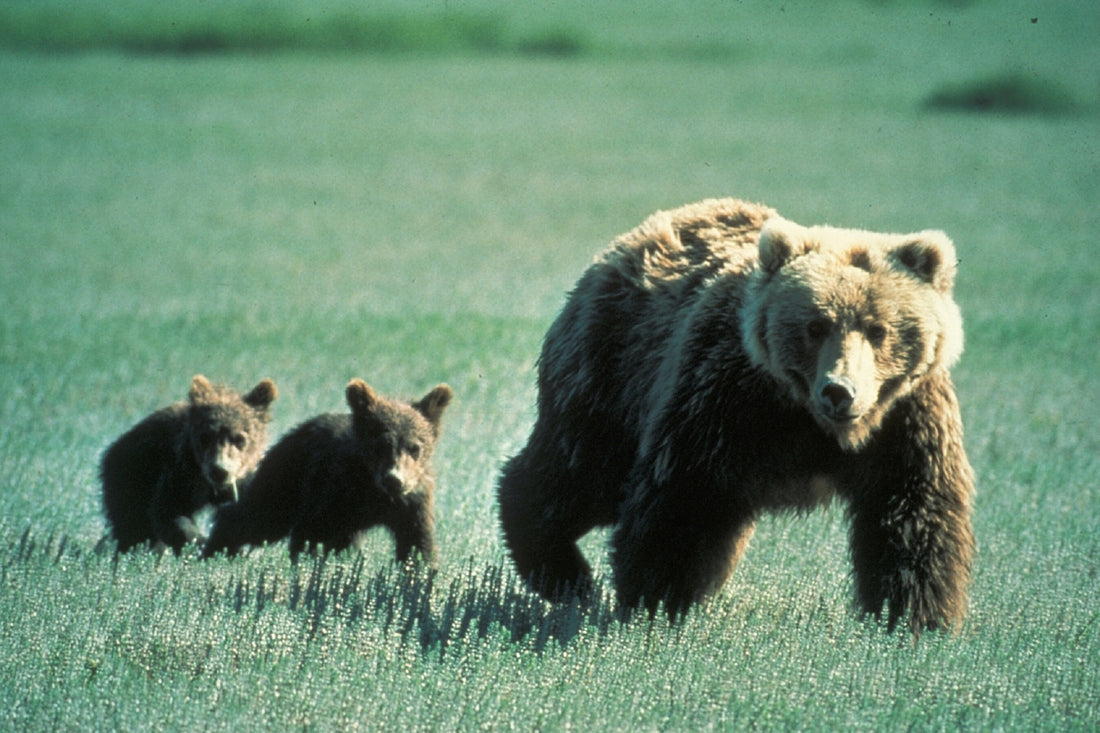
Bear Awareness! Bear Safety while Hiking.
Share
Alaska is unique in that all 3 species of bears found in North America reside in Alaska! Polar Bears mainly live in the extreme northern and western tundra areas of Alaska. Brown Bears or Grizzly Bears can be found from the islands of southeastern AK all the way to the arctic. Black Bears are most commonly found in Alaska’s forests.
Bear Identification:


Brown/Grizzly Bear vs. Black Bear Identification and Differentiation

Illustration from Yellowstone National Park

Bear safety while hiking:
- Avoid startling or surprising bears. Make your presence known by calling out “Hey Bear” while hiking, making loud noises with sticks, talk boisterously with friends while hiking.
- If you come across a bear, give them plenty of space. Just like humans, they like to have their own personal space bubble and if you cross into their space, they will likely react aggressively. Use binoculars to view bears well from a safe distance.
- Keep your food and garbage stashed securely when out hiking. Bears are constantly on the hunt for snacks as they only have half the year to build up their fat reserves to keep them alive while hibernating through the winter. Plus if a bear is fed human food, they’ll begin to associate humans as a food source and might also get lazy and stop foraging and hunting for their own food.
-
If a bear approaches:
- Stay calm, talk to the bear, wave your arms, and help it to recognize you as human.
- Don’t run. Just like a dog, a bear’s instinct is to chase something that flees. Even Usain Bolt, the fastest human on the planet, maxes out at 28 mph. Bears have been clocked at 35 mph. You’re definitely not going to outrun them.
- If it keeps coming closer, keep waving your arms and talking to it. If it continues approaching, make loud noises with pots, pans, sticks, throw rocks at it, or as a last resort use bear spray. (See below for more details on using bear spray)
- If it attacks, your response depends on the type of bear. An easy rhyme to remember is “If it’s brown, lay down. If it’s black, fight back!” Brown bears (grizzlies) will likely leave you alone if it thinks you are dead. Lay flat on your stomach or curl up in a ball and cover the back of your neck. If it’s a black bear, fight back regardless of the circumstances. These bears are more afraid of you than you are of it.
-
Carry bear spray and understand how to use it as a deterrent when you encounter a bear and it attacks. Bear spray only sprays a short distance and for a short timespan. It is important to note the wind direction when spraying it as if you pull the trigger and it blows back at you, it is extremely uncomfortable and can temporarily blind you!
- Carry bear spray in an easily accessible place within your reach while hiking.
- Know how to remove the safety wedge in order to discharge.
- Spray in 1-2 second bursts with the wind to your back in a zigzag pattern while backing away.
- Note that it is ineffective if a mother bear thinks you are a threat to her cubs or if a bear is guarding a kill or carcass. In these scenarios, the bear will be unphased by this deterrent.
Seeing a bear while exploring Alaska is quite common and a very memorable experience. If you do encounter a bear, remember to keep your distance and enjoy their beauty from afar. They are incredible creatures that add a ton to the environment. Their “droppings” distribute seeds throughout various ecosystems creating new plant growth. Dragging fish carcusses through the forest enriches the soil with nutrients. Plus bears are great for disposing of other animal carcasses, in turn keeping the forests clean. These are fascinating creatures that we hope continue to flourish in our Great Alaskan Wilderness!
Some great options for bear safety while hiking:
- Bear Bells
- Bear Canister BV450
- Bear Canister BV500
- Ursack Allmitey
- Binoculars (Sometimes available on consignment at The Hoarding Marmot)
- Bear Spray (Available at The Hoarding Marmot)